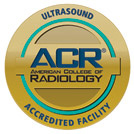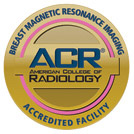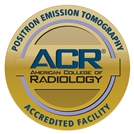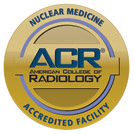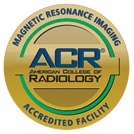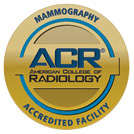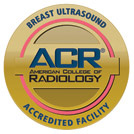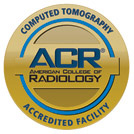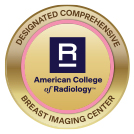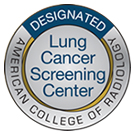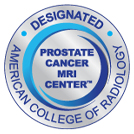Symptomatic or not, certain individuals are at increased risk for lung cancer. To address these concerns, a doctor may recommend a lung cancer screening. With today’s imaging technologies, this screening is done with low-dose computed tomography. LDCT uses sophisticated X-ray equipment to take multiple cross-sectional images of the chest area. Compared to traditional X-ray scans, the procedure utilizes up to 90-percent less ionizing radiation. Image quality is detailed enough to detect any abnormalities.
What’s An LDCT Lung Cancer Screening?
Ideally, this type of lung cancer screening identifies the disease in its early stages. Although certain lifestyle habits predispose individuals to a higher risk of lung cancer, a doctor may also factor in age, gender and family history before requesting this test.
LDCT became the current standard after the National Cancer Institute’s National Lung Screening Trial (NLST), a randomized clinical trial that determined whether conducting low-dose CT scans could reduce lung cancer death rates among high-risk patients. The study involved 53,000 individuals aged 55 to 74 and already at risk for lung cancer, from 33 locations across the country. Individuals were scanned via LDCT or a standard chest X-ray once a year for three consecutive years. Among the patients screened via LDCT, survival rates were 15 to 20 percent higher than those screened with a traditional X-ray.
As a result, LDCT is considered the most effective lung cancer screening method by the National Comprehensive Cancer Network, American Lung Association, American Association for Thoracic Surgery, American Society of Clinical Oncologists, American College of Chest Physicians, American Thoracic Society and the American Cancer Society, all of which now recommend that high-risk patients undergo an LDCT scan at least once annually.
Compared to traditional X-ray scans, LDCT of the chest:
- Creates higher-quality images that clearly identify small nodules in the lungs, allowing the disease to be detected in its earliest, treatable stages.
- Is non-invasive, does not involve contrast material or leave traces of radiation in the body.
- Won’t affect metal parts in a patient’s body, such as artificial hip joints or pacemakers.
As a result, patients who are screened for lung cancer via LDCT can receive treatment while the disease is still in its early stages. Yet, LDCT has a few risks:
- False positive and false negative results, leading to delayed or unnecessary medical treatment.
- It cannot detect if cancer has spread outside the lungs.
- Exposure to low-dose radiation.
- The procedure is typically done only if a patient meets certain criteria, as Medicare and other insurance carriers will otherwise not cover the costs.
Who Should Have This Procedure?
Lung cancer is the leading cause of cancer-related death in the US and around the globe; 85 percent of the individuals who develop this condition have been cigarette smokers. The condition forms in the tissues lining the air passages and the most common type is non-small cell lung cancer. Certain factors predispose individuals to higher lung cancer risks:
- Smoking tobacco
- Exposure to radon, asbestos or other known carcinogens
- Family history of lung cancer
- Chronic lung diseases
When doctors can detect lung cancer early, the rate of successful treatment increases. When the disease is detected at a later stage, it may have also spread to other parts of the body.
For screenings with LDCT, Medicare covers patients if they meet certain risk criteria. The United States Preventive Services Task Force recommends adults aged 50 to 80 years who have a 20 pack-year smoking history and currently smoke or have quit within the past 15 years:
- Screen for lung cancer with low-dose computed tomography (CT) every year
- Stop screening once a person has not smoked for 15 years or has a health problem that limits life expectancy or the ability to have lung surgery.
Physicians will also recommend patients for a lung cancer screening based on their family history.
Preparation
Patients will go to a center that specializes in LDCT cancer screening and preparation will be similar to getting an X-ray. The CT scanner is a round-shaped device with a tunnel and table going through the middle. As the patient lies on the table, a gantry device with a mounted X-ray scanner and detector rotates to take multiple images. The table will move through the tunnel, while two-dimensional images from the scanner appear on a computer monitor in a separate room for a radiologist to review.
Throughout the procedure, you will lie flat on your back and may be asked to raise your arms above your head or hold your breath for five to 10 seconds.
Following the scan, a radiologist, pulmonologist or other lung specialist will examine the images for nodules. Most nodules are noncancerous lymph nodes or small areas of scarring but nodules over a certain size are concerning. If these are found in your results, multiple LDCT scans may be recommended to check for growth and other changes over the next few months.
If the nodule grows, your doctor may request a lung biopsy or contrast-dye CT scan to analyze the cells. Furthermore, your doctor may request blood work to assess the stage of the tumor, larger-level CT scanning of the body, a bone scan or a PET/CT scan.
Has your doctor recommended a lung cancer screening with LDCT? Contact us to make an appointment today!





